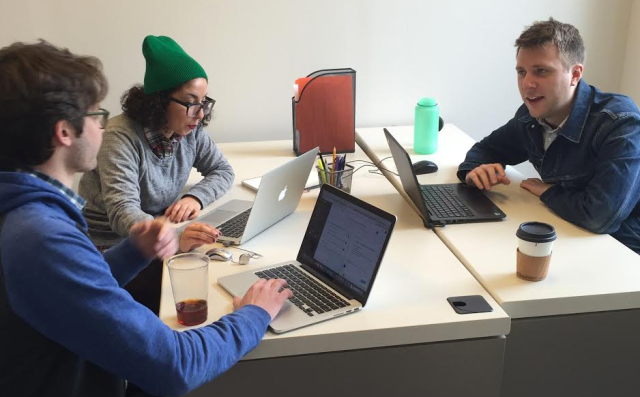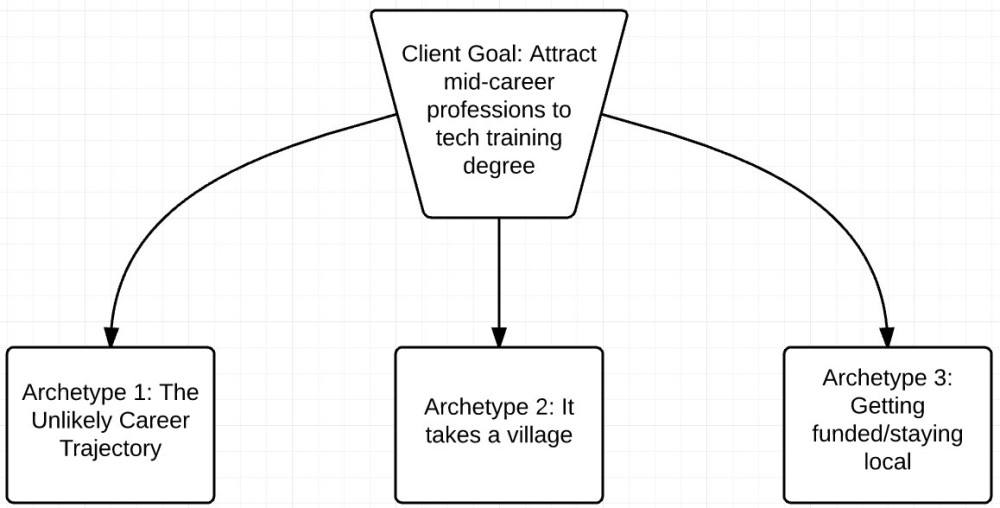2015 was the year we at Technically Media took our first serious steps into native advertising.
With nonprofit local publications like the San Diego Voice, huge media startups like BuzzFeed and legacy news organizations all venturing into sponsored content to diversify revenue, we felt we could use our position as local community connectors to create a unique, valuable product. We call it Technically Creative.
Learn more about Technically CreativeHere are 10 things we’ve learned after one year of working with clients.
1. Our sponsored content delivers #impact
Connecting people is a big goal for us on the editorial side, and we’ve found that our sponsored content can help us achieve this core mission.
On the Technical.ly internal team Slack, we have an #impact channel.
That’s where we crowdsource company-wide accounts of impact we’ve created, instances when we connect an employer with a new hire, make an introduction that leads to a business deal, speak out to successfully increase diversity at conferences, bring attention to a young civic entrepreneur’s struggle to stay in the U.S. or connect civic hackers with problems in need of solving.
#Impact is in our DNA.
So when we work with clients whose goal is to connect with readers in a way that leads to meaningful, actionable outcomes, it’s nothing new for us.
In 2015 through our sponsored content, we introduced student entrepreneurs to the Philly tech community, a new generation to Longwood Gardens and web developers to free, educational resources.
Nexus Maximus RecapHere’s what happened at Nexus Maximus. A few of the innovations on display at Philadelphia University included a machine that shows you how much sugar you’re drinking, a water barrel that generates electricity and 3D-printed snack bars.
Posted by Technically Philly on Wednesday, October 7, 2015
2. Sponsored content can provide the resources to do more ambitious content
We learned this year that the additional spend available for sponsored projects can open opportunity to create content we couldn’t ordinarily afford.
- We shot a sampler platter of 1-2 minute video, GIFs and high-res photos at Philadelphia University’s Nexus Maximus event in September. We will be investing in more multimedia products on sponsored campaigns in the year ahead.
- We’re currently working with clients on ebook and infographic assets, similar to our Beyond Recruiting ebook, and it’s afforded us the resources to create a technical toolkit for elegantly hosting these assets on-site. We’re rolling it out with our first sponsored ebook in 2016.
- Not to mention, we’ve been able to work with talented writers like Mike Bederka and Valerie Hoke.
3. Use content archetypes to frame and understand the client’s goal
How do we begin the conversation with the client?
As we ask questions and listen to the client’s goal, we like to put pull a few examples from our editorial reporting, to show the client the possibilities for a finished product.
We call these article “archetypes” (think 9th-grade English). They afford us the chance to put on our Don Draper hats and paint a picture for the client of an article concept that addresses their goals.
These data-backed recommendations ground the client conversation, so we can work together to narrow in on a concept that most effectively addresses their goal.
4. If you need a proof of concept, look to your editorial analytics
We use tags internally to track these article archetypes (among many other article attributes) across editorial and sponsored campaigns, which helps us deepen our understanding of content that actually resonates with our community.
The data-driven approach not only makes us smarter, we’ve found it helps gain client buy-in.
5. Great clients make great content
We know local tech communities, we know content and we have troves of data to prove it. Our best work has come out of relationships with clients who trust our expertise. Together we define the article angle, the client introduces us to sources and we do the rest.
6. Communication between Sales, Editorial and Engagement is critical
Sponsored content is an exercise in working together.
Sales needs to be aware of product possibilities that fit the client’s goals early on in the sales process. It’s important to help decision makers visualize the possibilities for a final product, in the sales stage, to help those deals close. This means developing processes and systems that empower Sales to pull that data in early stages.
On the other hand, we’ve also needed to develop new processes for Sales to communicate project specs with Editorial. The earlier Sales can alert Editorial/Engagement of a deal in the pipeline, the more adept we can be in preparing resources for the product.
Is the client going to need us to cultivate sources? That’s something Editorial needs to learn as early as possible.
These experiences have informed creation of new communication pathways across the news organization.
7. Don’t funnel your money to Facebook. Invest in great work.
We’ve seen $0.30 to $0.40 cost per click on the paid Facebook boosts we’ve run on sponsored content campaigns. They can be useful in reaching niche communities tangential to our core community. For example, if a university client’s goal is to reach alumni with news about its new incubator, we may want to target these alumni in a paid boost.
But paid boosts aren’t perfect. They can take great content to the next level and help it spread exponentially, but a paid boost can’t deliver traction to poor content, all by itself.
We’ve seen a much greater return when making the additional investment in research and writers, up front.
8. Ongoing communication with the client is critical
The relationship with the client doesn’t end after the success strategy call. Great rapport is crucial for uncovering sources and connecting them with our reporters.
On larger, multiple article campaigns that may span several months, the account manager/client relationship bears similarity to the reporter/source relationship. It helps us stay abreast of new leads and publish fresh stories throughout the campaign.
9. In the end, our best sponsored content tells a personal story.
10. But visuals of rubber band launchers and laser light shows don’t hurt, either.
Looking to pick our brains about sponsored content?
We’ll be hanging out in the Technical.ly Slack on Fri., Feb. 5 at 1 p.m. to answer your questions. Whether you’re a publisher, marketer or even a prospective Technically Creative client, all are welcome.
Sign up for the Technical.ly Slack
This post is sponsored by Technically Media.
Before you go...
Please consider supporting Technical.ly to keep our independent journalism strong. Unlike most business-focused media outlets, we don’t have a paywall. Instead, we count on your personal and organizational support.
Join our growing Slack community
Join 5,000 tech professionals and entrepreneurs in our community Slack today!





